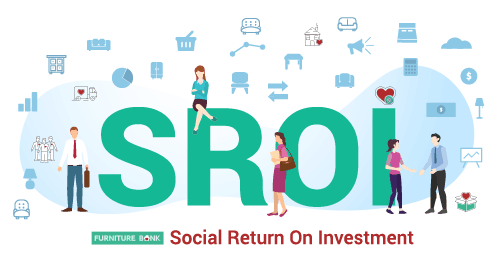It may seem like it was just yesterday when you had your first child and moved out of your parents place to set up a new home for your small but growing family. Coming back to the present, your youngest calls home to say that she has decided to move in with her boyfriend and that she will be taking a few pieces of furniture from her bedroom with her. Your journey to downsize your home is calling for you to begin.
First off, what is downsizing you ask?
Downsizing is moving from a larger home to a smaller home and not many homeowners dream about buying a smaller home. But small homes have their own benefits as does downsizing.
BENEFITS OF DOWNSIZING
- Fresh start. Every move is a new start, but downsizing brings about a new kind of start. Really letting go of the things that do not matter and that are of the past.
- Less stuff. When moving into a smaller space you force yourself to think about the things you really need and want. When you realize that your new home will not have the additional storage space, you will have to let go of the stuff you really do not need.
- Less cleaning. Depending on how much you have to downsize to, you can be reduced to almost 1/2 of the space you originally had at your old house. Reduced space means it will take 1/2 the time to clean.
- Save money. Smaller property typically means a smaller mortgage and that implies more cash going into your piggy bank. When there is less space to heat, cool and light, your utility bills will naturally be reduced. If the money saved is well invested, it can grow exponentially.
- Reduce debt. With less money spent on housing, you can use the additional money to double up on your mortgage payment which will enable you to pay off your mortgage quicker.
- Boost retirement fund. Once you have fully paid off your debt, it is time to build wealth for the future. You can easily start with investing 15% of your household income into a Registered Retirement Savings Plan (RRSP) and Tax-Free Savings Account (TFSA). If you aren’t exactly at 15%, $500 could be the push that will get you there.
- More time. With less things to take care of, you have more time to do other activities. How will you spend the 10 extra hours you get a week?
Choosing a smaller space is often related to a desire to live simpler whether you are retiring or just want a low-maintenance lifestyle. Many adults 55 and older are leaving the suburbs and moving to condos or lofts. These homes are easier to maintain and depending on location, may have easy access to amenities such as restaurants, culture and nightlife.
Downsizing is sometimes not actually a choice. It may be the result of a life event such as a divorce or unemployment. These are unexpected events and you may be forced to find a smaller home for financial reasons.
3 SIMPLE QUESTIONS BEFORE DOWNSIZING
1) Does size matter?
How much of your identity is wrapped in your house? More than any other assets, a house is used by our family, friends and neighbours as a measurement of our status and importance within the community.
2) Will I miss a more spacious home?
Will moving into a small place make you feel like a step forward because you are living more environmentally friendly and simplifying your life? Or will it feel like a step backward?
3) How will life events affect living in a smaller home?
Think of possible situations you may not expect, such as adult children moving back home. Would you like sharing one bedroom and bathroom with them?
When you are looking for a new home, ensure that it meets your physical and emotional needs as well as your financial ones.
READY TO START YOUR DOWNSIZE?
Here’s a list of simple questions to ask yourself:
- How much space do you have to move in to? This will help with setting the guideline of how much you can move in to your new home. Be exact in measuring closet or cabinet space.
- Can you quantify how much you have? Look into how much you currently have. Determining how much you have and how much space you have in your new home will help you figure out what you can bring with you.
- Is it something you really need to keep? Determine what are the “Must haves”, “Can live withouts”, and “Can be replaced”. Separating items into different piles of importance can help simply the process of decluttering. Must haves are obviously things that need to go with you. Can live withouts are things that you can sell, donate, or get rid of. Could replace should be for things that you could possibly sell and buy something smaller that you would like.
- Do you have several “insurance” items that you have for just in case scenarios? Get rid of extra belongings and items you will no longer need. You can do this by holding a garage sale or donating to a charitable organization. Doing this will ensure that you will not be bringing clutter to your new home.
- Do you know where you will want furniture to be placed in your new home? Use floor plans to rearrange furniture before moving in. Organizing how furniture will be placed in your new home will help determine exact locations for where to place furniture and if there is enough space to move around. If you give the floor plan to your movers, an added bonus as they will know exactly where to put furniture when they help you move.
- Still items that really have to be kept? Self-storage can be used as a temporary or seasonal solution. This is a great way to declutter your home. It can be used as a way to temporarily store possessions that are hard to part with or maybe will come in handy in the future. It definitely helps freeing up space at home and can be used to store seasonal items – like clothes.
Once you have finally moved into a smaller space and reduced your possessions down to the things that are actually essential to your living, adopt a ruthless approach to what goes into your home. Make sure that everything you bring in is something you can store and something you really want or need.
Downsizing may sound like a hassle or a terrible experience, but it does not have to be. Have a positive mindset and think about the life you will get in exchange for getting rid of the unnecessary items. Your positive attitude will make the process smoother and more enjoyable.
Click here for more downsizing pro tips.






